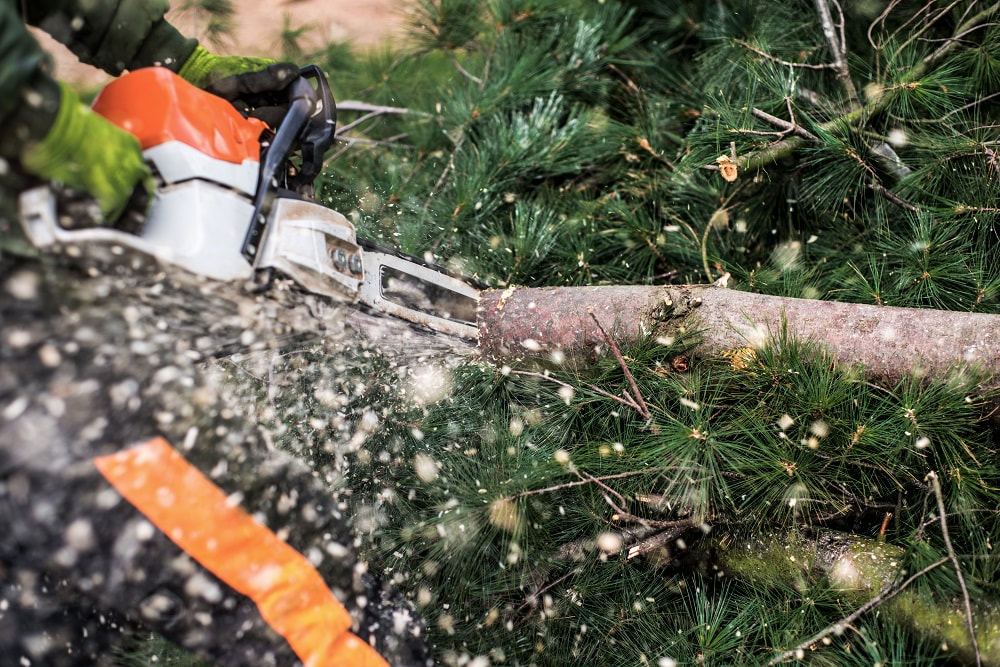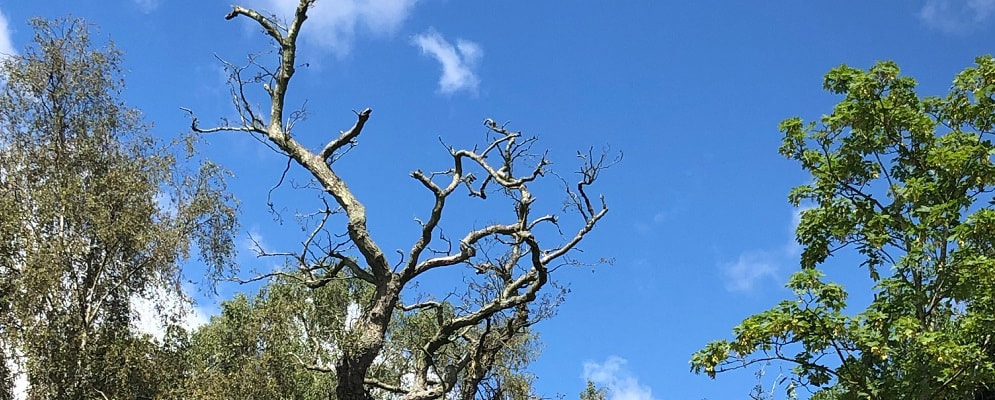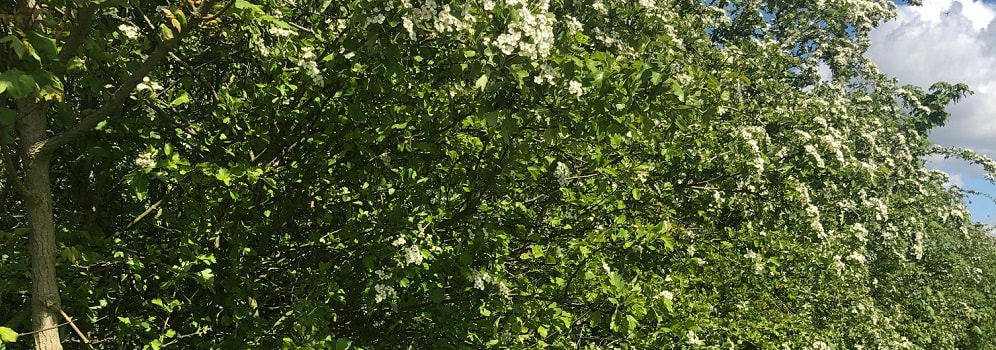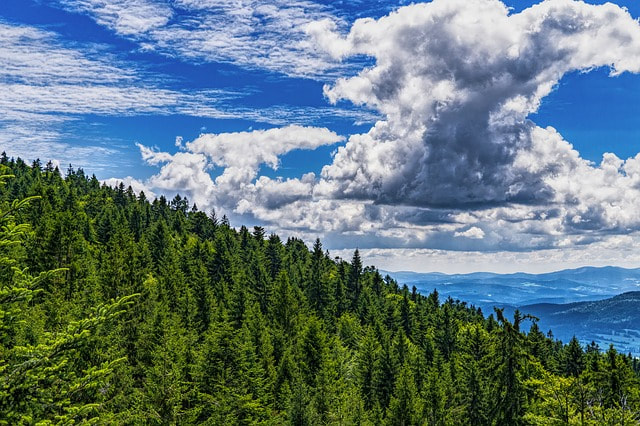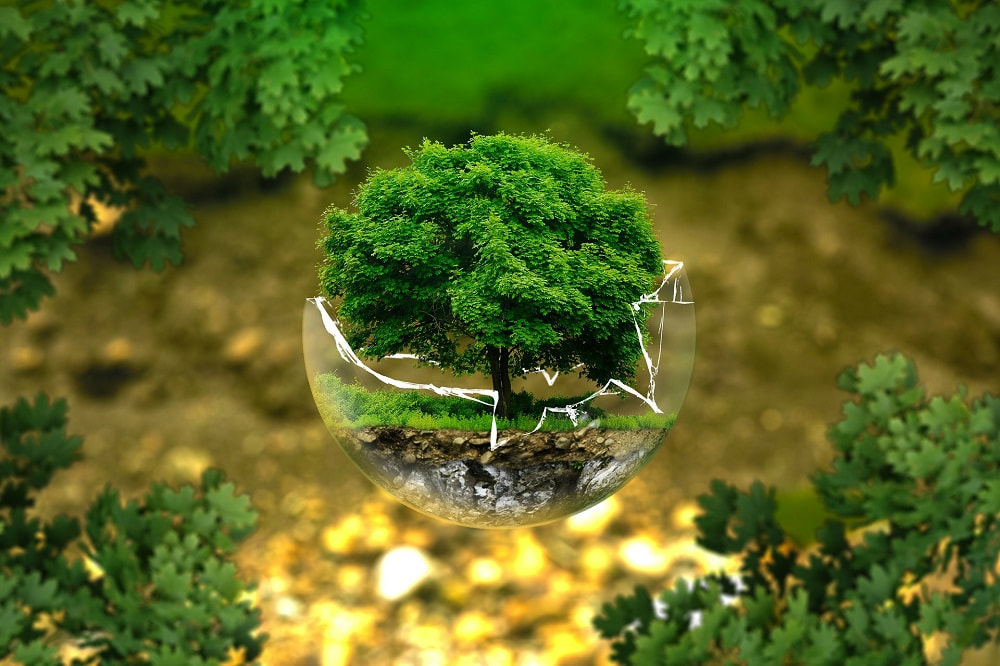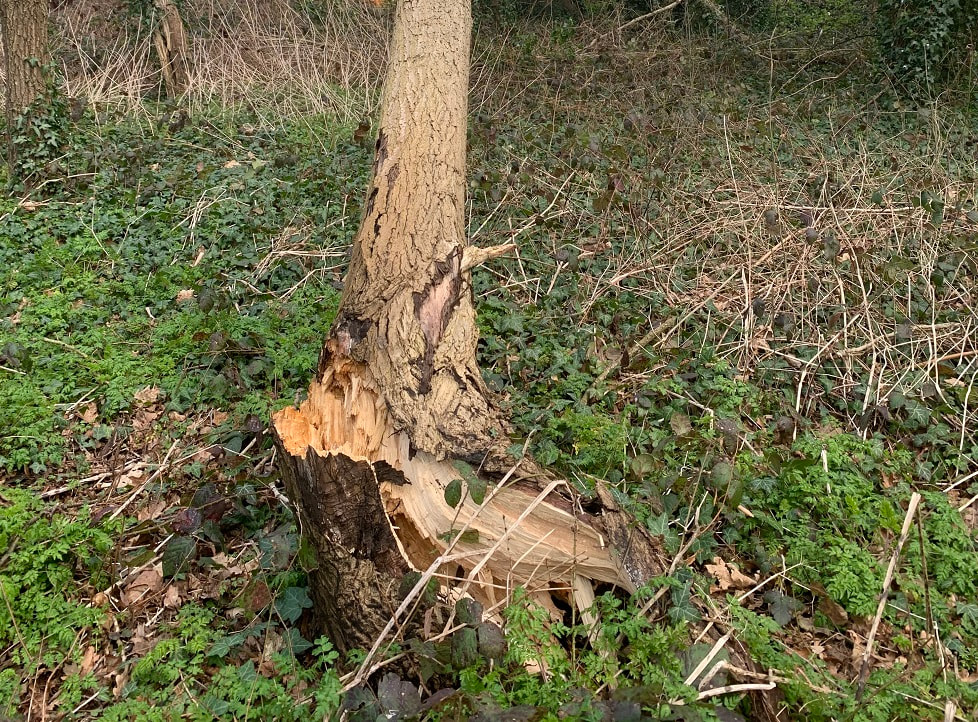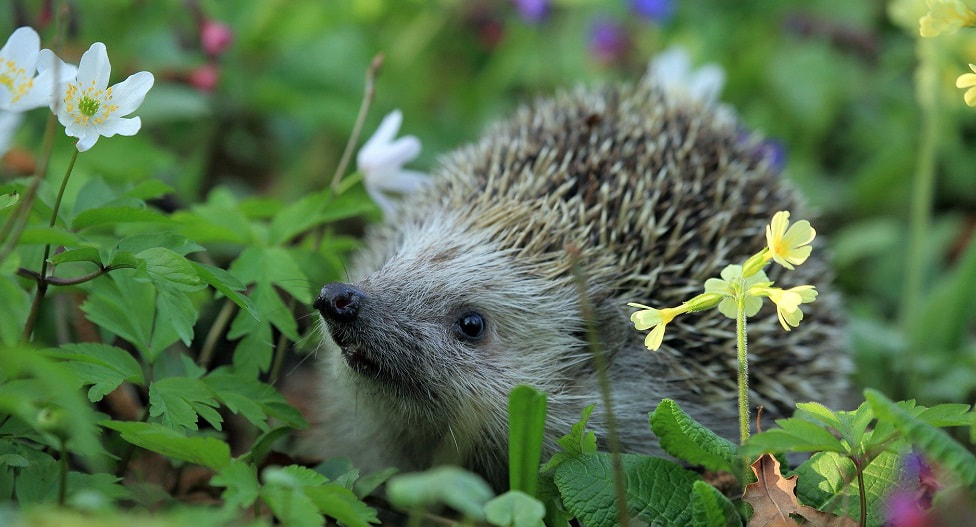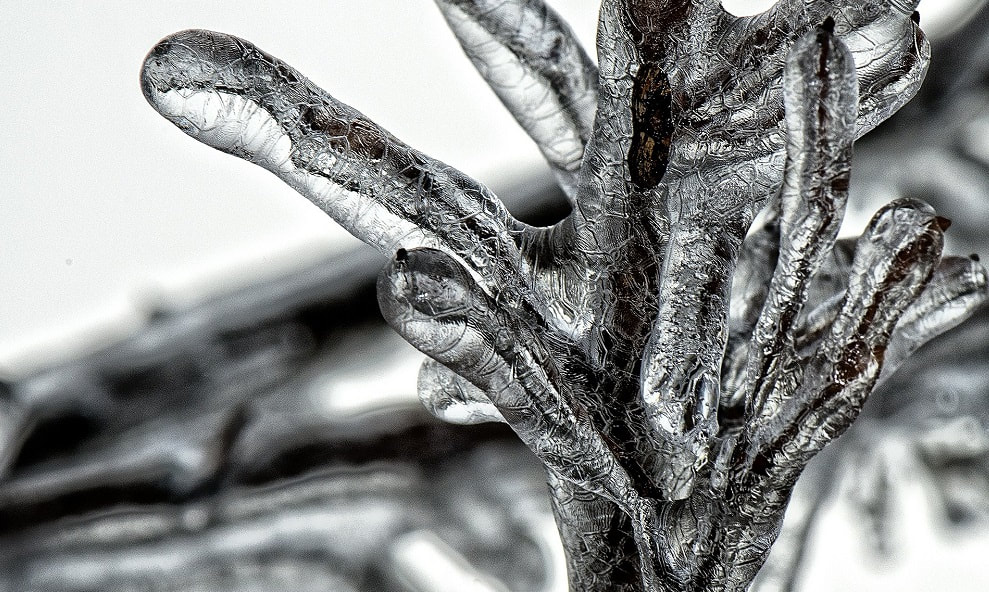|
Back to Blog
Selecting the right Tree Surgeon9/1/2023 With so much competition out there selecting the best tree surgeon for you can be a daunting task. ‘Tree Surgeon’ is not a protected term which unfortunately means that just about anyone with a saw can claim to be a professional arborist.
So when so many local tree care businesses are fighting for your attention what research should you do and what do you ask when you call for a quote? This guide aims to tell you just that, but first of all it will explain the potential problems with attempting tree surgery yourself.
0 Comments
Read More
Back to Blog
Is there something wrong with my tree?22/8/2022 Have you noticed something wrong with your tree? Do you think there might not be well? Here is a quick guide on how to visually check your tree.
Base of the tree Start by examining the roots. Are there signs of the ground heaving up, severed roots or signs of decay or fungi, such as mushrooms? Tree Trunk Then move up towards the tree trunk - just above the soil. Can you see any loose bark, cracks or deep slits or peeling? Inspect the rest of the trunk for signs of decay, such as signs of swelling, cavities, soft or decaying wood or small holes. Canopy Finally, look up at the canopy, the upper layer of branches and leaves. Can you see any signs of:
Does the structure of your tree seem unstable? Perhaps it is time to remove your tree. If you have any concerns about your tree and would like one of our qualified arborists to come and inspect your tree, just give us a call. We will advise you on what we think is the best treatment for the tree, or whether it would be better to have the tree removed. Let us help you ensure the best care for your trees. Chelmsford Tree Surgeon is made up of a team of professional arborists that love working with trees all year round across Essex covering: Billericay, Chelmsford, Hatfield Peveral, Ingatestone, Maldon, Margaretting, Stock and surrounding areas. Give us a call today on 01245 527 053. If you are in need of any of the following services, please give us a call: Emergency Tree Services Tree Pruning Tree Removal Stump Removal Site Clearance Crown Reduction Crown Lifting Crown Thinning Hedge Trimming
Back to Blog
Tips for pruning your hedges4/7/2022 From spring through to late autumn the hedges are active and now in May, you will see that many hedges have grown quite considerably in the past few weeks, especially this year with all the sunshine we have had in March and April.
Hedges can be made from a variety of different shrubs and trees, ranging from conifers to holly and hawthorn hedges. Here is a list of common hedges that we trim and the best time to do this. Trimming Yew Hedges When to trim: In August/September How often: Once per year Trimming Privet Hedges When to trim: During April - September How often: At least twice per year. The more it is trimmed this thicker it can get. Trimming Laurel Hedges When to trim: June - September How often: Once per year Trimming Berberis Hedge When to trim: After it has flowered How often: Once per year Trimming Leylandii Hedging When to trim: April to September How often: At least twice per year. The more it is trimmed this thicker it can get. This is just a short list of some of the hedges we trim. If you have any questions, please get in touch. If you would like your hedges trimmed or require tree cutting services in Chelmsford call us to get a quote today. Some tips when cutting hedges
If it sounds like too much work, then give us a call. We are more than happy doing this work. We love being outdoors, in all weathers…though we do prefer it when it is not raining! If you are in the Chelmsford area of Essex, or nearby and need your hedges pruned, call Chelmsford Tree Surgeon on 01245 527 053.
Back to Blog
The Benefits of Trees2/5/2022 In recent years the weather patterns are nothing short of crazy. While parts of the Northern Hemisphere are suffering intolerable cold conditions with floods and excessive winds and snow falls in the Southern Hemisphere there is extensive droughts, floods, winds and other horrors like super fires. In Australia as elsewhere the droughts have cost lives as farmers kill off their animals and dig crops into the ground. Those crying the loudest about the drought gripping their livelihoods are pictured on acreage where there is barely a tree in sight. The land is devoid of any shade and animals suffer in extreme temperatures of 40* and more on many days. Where winds are roaring over the ground bare of any covering it picks up speed and before long is cyclonic in its nature. It rips up whatever lies in its path and as the earth warms due to climate change things are worsening. This planet was designed with trees to provide shade, remove carbon from the atmosphere and make oxygen that is released through their leaves. They are also habitats for birds, animals and insects dependent on them for their survival. Man, however, appears to have a war on trees as they are brought down to the ground and often burned. In rainforests one can see the water that trees pass into the atmosphere which is then part of the hydration system of the planet. They are, however, being removed to make way for more agriculture and animal rearing. The ideas that promote no trees in these circumstances are prominent world-wide. So what is the value of keeping trees on properties where animal husbandry and farming takes place? Aside from the obvious trees cool the ground and is can be several degrees lower in temperature under a tree than in the open. With rising temperatures one would think the removal of them would be considered a crime as we are all suffering the effects. If you reside in the Chelmsford area of Essex, or run a business with land that is in need of tree care - call Chelmsford Tree Surgeon on 01245 527 053 to find out how we can help.
Back to Blog
Trees can make the outside of your property look beautiful. Having trees in your garden can create areas for shade or can be there as a feature. As much as trees are easy to plant and grow, maintaining them is an important step to helping them stay healthy, grow stronger and protect your property for accidental damage.
Do you need to prune trees? Yes. Trees should be trimmed or pruned periodically, and sometimes branches need to be cut off to help ensure the health of the tree and your safety. Here is why tree pruning must be a part of your ongoing garden maintenance:
How often should you trim your trees? We suggest pruning or trimming trees once per year during the dormant season, which can vary depending on the species of your tree. For major tree cutting, like crown thinning, we suggest every 3-5 years. The dormant season is classed as the period when the fruit or flowering season has passed. This is usually between late autumn and before the start of spring. Other times when tree pruning may be necessary are:
Can you trim, prune or cut a tree yourself? The quick answer is maybe. It depends on the type of tree, how big it is and where it is located. Before embarking on this yourself, think about your safely. This is a dangerous job, especially when you are dealing with older and larger trees. Check your tree and use our rule of thumb to help you decide:
If you have any doubt, then it’s probably likely that you should call in an expert arborist. They will be able to complete the job in a timely and safe manner and they will be able to dispose of your branches too. Contact us for the following tree services in Chelmsford: Emergency Tree Services | Tree Pruning | Tree Removal | Stump Removal | Stump Grinding | Crown Lifting | Crown Thinning | Hedge Trimming We cover: Billericay, Blackmore, Boreham, Broomfield, Chelmsford, Danbury, East Hanningfield, Hatfield Peveral Ingatestone, Little Baddow, Maldon, Margaretting, Mountnessing, Newney Green, Radley Green, Roxwell, Stock, West Hanningfield, Writtle.
Back to Blog
What is a tree preservation order?1/2/2022 Only a tiny minority of trees in England are protected by Tree Preservation Orders (TPO). These are made and managed by local authorities. Some of them are protected because they are within a conservation area. Unauthorised work to trees of this nature could lead to prosecution, so it is in your best interest to do your research before undertaking any tree work.
Tree Preservation Orders (TPOs) are administered by Local Planning Authorities (LPA) and are made to protect trees that bring significant benefit to the local area. This protection is particularly important where trees are under threat. All types of tree can be protected, and a TPO can protect anything from a single tree to all trees within a defined area or woodland. Any species can be protected, but no species is automatically protected by a Tree Preservation Order. When a tree has a TPO it becomes a criminal offence to cut down, top, lop, uproot, wilfully damage or wilfully destroy the tree(s). Serious cases will be dealt with by the Crown Court where an unlimited fine can be imposed. Many local authorities now have online maps to help you investigate if a tree is protected by a TPO or is in a conservation area. Try looking at Chelmsford City Councils website for more information. You might also find it helpful to seek the advice of a tree surgeon prior to making an application. If you would like to contact Chelmsford Tree Surgeon, call us on 01245 527 053. Contact us for the following tree services: Emergency Tree Services | Tree Pruning | Tree Removal | Stump Removal | Stump Grinding | Crown Lifting | Crown Thinning | Hedge Trimming
Back to Blog
It is always good to have trees in your back garden. Not only do they make your garden look beautiful, but they also provide various benefits such as reducing heat by cooling your home with its shade and lessen air pollution. It also adds value to properties.
However, neglected trees can die and become hazardous; keep reading to learn what the warnings signs are...
Back to Blog
Garden Planting Whatever The Weather17/3/2021 All the extremes of weather we've been seeing this past year have fueled the debate about whether our climate is changing for the worse or whether we're just having a decade or so of seasonal adjustment. I don't have the science but I have spoken to a number of gardeners both professional and amateur about the last ten years and what they've seen change. It makes for interesting listening.
Back to Blog
Can a Tree Freeze to Death?17/2/2021 Have you ever looked at a tree covered in snow or with ice dangling from its branches and wondered "Is it possible for a tree to freeze to death?". Unless the tree comes from warm climate the answer is no.
So how do trees survive freezing temperatures? The answer is both fascinating and complex. Not all trees have been created the same, but when winter arrives, most trees in the UK survive in a similar fashion. So how do trees survive freezing temperatures? Let's take a look. |
|
Chelmsford Tree Surgeon
Suite 153, Dorset House, Duke Street, Chelmsford, CM1 1TB 01245 527 053 |
